
An increasingly important purchasing criterion, the update policy of Android smartphones is nevertheless one of the areas where manufacturers remain the most vague. Fortunately, things are starting to improve, and it’s becoming easier to tell whether your smartphone will receive Android 13 or Android 14.
Samsung has shown the way by improving its update policy, and since then manufacturers like Xiaomi and more recently Google have been making efforts to reassure customers. These brands make firm commitments as to the number of Android versions and the duration of security updates they guarantee for their smartphones.
My colleague Antoine contacted most of the Android manufacturers most represented in terms of units sold and market share in August 2022, and in the first version of this article, published in February 2022, he asked them to tell us officially, for each range in their current catalog, how many Android versions and security patches the models concerned will receive.
For this updated version in January 2024, we have checked whether there have been any changes in the update policies of the manufacturers mentioned in this article.
Jump to:
How many Android and security updates does Google promise
As of November 2023, Google is the manufacturer with the best Android update policy. This may seem logical, but just a few months ago, Samsung was leading the way. The Mountain View firm has made a comeback with its Pixel 8 range and is now promising seven years of Android updates and security patches.
Google clearly states how long and how often its Pixel smartphones will be updated directly on its official website.
But since not everyone is aware of this, as is only natural, I’ll quickly remind you that the Pixel 4 and Pixel 5 ranges benefit from three years of updates. This increases to five years for the Pixel 6, Pixel 7, and Pixel Fold ranges. As mentioned above, you’ll get up to seven years of updates with your Pixel 8 or 8 Pro.
- Pixel 8 family: 7 years of system upgrades and security patches.
- Pixel 6, 7, and Fold models: 3 years of system upgrades, 5 years of security updates.
- Pixel 4, and 5 families: 3 years of system upgrades and security patches.
How many Android and security updates does Samsung promise
Samsung briefly lost its title as the Android brand with the longer software support to Google in 2023, but just as 2024 started, the company matched the seven years of software support, for now, only for the flagship Galaxy S24 family.
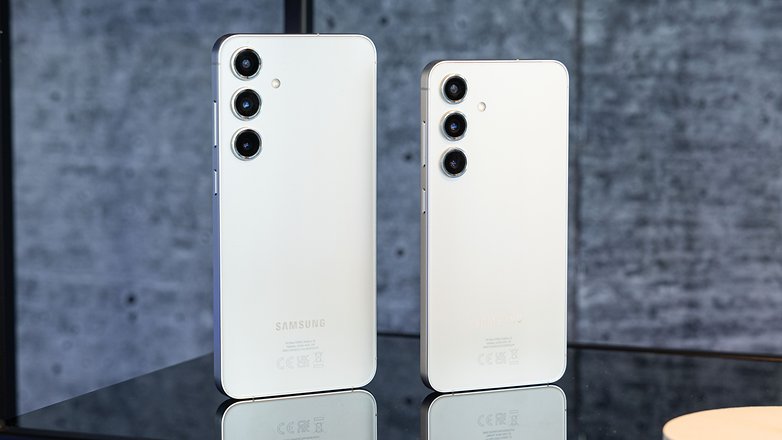
Samsung’s official commitment
“Samsung allows all Galaxy smartphones to receive at least two Android system updates and regular security updates for up to four years after being launched in the global market,” a Samsung Germany representative informed us.
Samsung smartphone update cycles
Samsung Galaxy S:
- Android versions: Seven, if released in 2024 or later.
- Four, if released in 2021 or later.
- Three, if released in 2019 or 2020.
- Security updates: Seven years, if released in 2024 or later.
- Five years, if released in 2021 or later.
- Four years for 2019 and 2020 models: monthly patches for two years followed by quarterly patches.
Samsung Galaxy Z:
- Android versions: Four, if released in 2021 or later, otherwise three.
- Security updates: Five years (four if released in 2020 or before), monthly patches for two years followed by quarterly patches.
Samsung Galaxy A:
- Android versions: Two minimum, four for some high-end and 2024 models.
- Security updates: Four years, monthly patches for some flagships for one year, then quarterly or half-yearly in the last year.
- Five years for “select devices”.
Samsung Galaxy M:
- Android versions: Two minimum.
- Security updates: Four years, quarterly, or even half-yearly in the last year.
Samsung Galaxy Note:
- Android versions: Three if released in 2019 or later.
- Security updates: Four years, monthly patch for two years followed by quarterly patches.
Is this information publicly available to the consumer?
Samsung distinguishes itself from other Android manufacturers by presenting a clear list of models kept up to date. This list is available online and you can check just how often your smartphone will receive security updates.
On the other hand, Samsung doesn’t make it clear just how long your smartphone will receive monthly updates or what kind of criteria are taken into account when deciding on the frequency of update releases over time. “The timing of monthly, quarterly, and half-yearly security updates depends on the launch date of the device and is re-evaluated at regular intervals,” Samsung said.
This can lead to contradictions. For instance, the Samsung Galaxy A72 will receive quarterly security patches while the cheaper and less capable Galaxy A52 which was released at the same time receives monthly patches.
How many Android and security updates does OnePlus promise
OnePlus has aligned itself with Samsung’s update policy, promising four major Android updates and five years of security patches for its smartphones from 2023.
The official release doesn’t specify smartphone models or product ranges, but given previous changes, this policy should only apply to flagships. OnePlus Nord N from N10 5G and N100 will also receive three years of security patches, up from two previously.
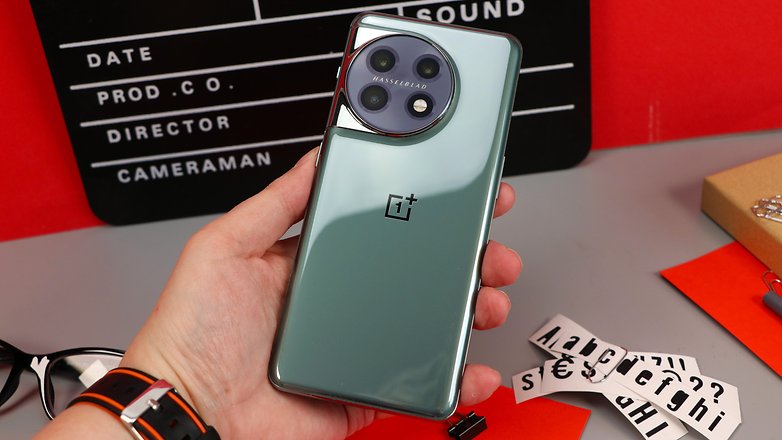
OnePlus’ official commitment
“For all flagships, Nord and Nord CE OnePlus offers two years of major Android updates and three years of bi-monthly security patches. And for Nord N10 5G and Nord N100, those will receive one year of major Android updates and two years of bi-monthly patches,” OnePlus France confirmed with us.
Since I contacted OnePlus on June 22 2022, the manufacturer has slightly altered its update policy for its most recent flagships. Thus, all flagships numbered from the OnePlus 8 onwards will benefit from three major Android versions and four years of security patches.
The update cycle of OnePlus smartphones
OnePlus numbered (flagship)
- Android versions: Four for 2023 models and later;
- Three for the OnePlus 8/8 Pro/8T/9/9 Pro; and two for previous models.
- Security updates: Five years for 2023 models;
- Four years, bi-monthly security patches for OnePlus 8/8 Pro/8T/9/9 Pro,
- Three years of bi-monthly security patches for previous models.
OnePlus Nord/ CE
- Android versions: Two.
- Security updates: Three years, bi-monthly security patches.
OnePlus Nord N
- Android versions: One.
- Security updates: Three, bi-monthly security patches.
Is this information publicly available to the consumer?
Currently, OnePlus doesn’t have a dedicated security update and patch schedule page on its official website.
However, the manufacturer has detailed its new update policy on its forum. So in this forum post, you can check out the update policy that applies to your OnePlus model. Like Oppo, OnePlus has clearly specified the duration as well as the frequency of its updates over time.
OnePlus also groups all its updated ROMs for its models on a dedicated page. You can download them and check their contents to see if they include a security patch or not.
How many Android and security updates does Motorola promise
Motorola used to be one of the first companies to release updates right after Google. Either because of its proximity to the Mountain View giant or because its software features are very close to “pure” Android. However, this has changed a bit since Lenovo bought the company.
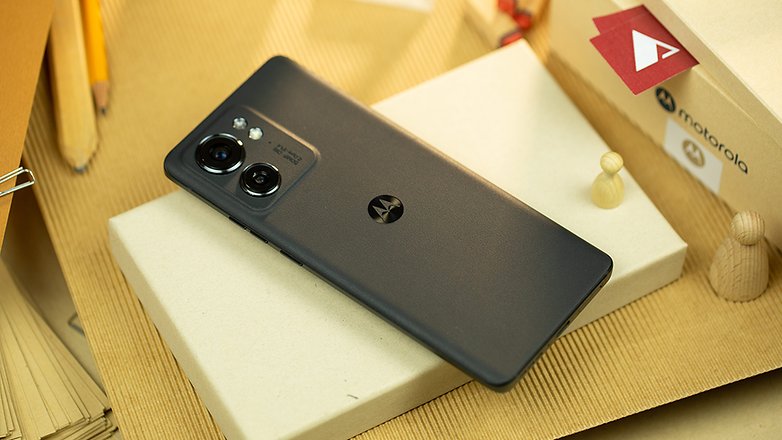
Motorola’s smartphone update cycle
In contact with Motorola via phone in Germany, we were told that “the updates occur according to the device line and are specific for the region”. That said, Android version updates can range from three to one year, while security patch releases range from four to two years depending on the series.
Motorola’s Ultra variants
- Android versions: Three years.
- Security updates: Four years, bi-monthly security patches.
Motorola’s Razr variants
- Android versions: Three years for 2023 models and later.
- Two years for previous models.
- Security updates: Four years for 2023 models and later.
- Three years for previous models, bi-monthly security patches.
Motorola’s Edge variants
- Android versions: Two years.
- Security updates: Three years, bi-monthly security patches.
Motorola’s G-models
- Android versions: Two years.
- Security updates: Three years, bi-monthly security patches.
Motorola’s E-models
- Android versions: One year.
- Security updates: Two years, bi-monthly security patches.
Is this information publicly available to the consumer?
Motorola offers an official page for checking Android update files for its devices, as well as another one specifically for security updates. As the company offers different models around the world, you will have to search by region: Motorola US.
How many Android and security updates does Xiaomi promise
Xiaomi has gone from being one of the worst students of software updates to one of the most exemplary. The manufacturer announced in 2023 that it now offers four years of Android updates and five years of security updates like Samsung.
This decision was announced on the occasion of the launch of the Xiaomi 13T and 13T Pro, and therefore probably concerns the brand’s flagships. Expect no more than 3 Android versions for the rest of the catalog.
The Chinese company improved a lot its update promise for some mid-range Redmi Note models, but since many of them are rebranded Poco phones, it is a little difficult to know which models will receive security updates for three or four years, as is the case for the 2024 Note 13 family.
As for security patches, this obscure Xiaomi page mentioned that the manufacturer offers at least two years of monthly and quarterly security updates after the initial release of the smartphone. For most models that were released in 2020/2021, the manufacturer even extended this promise to three years with a security patch once every 90 days.

Xiaomi’s official comment
“We do not give any official guarantees for our ranges at the moment, but many past examples show that we have regularly provided updates to older devices,” Xiaomi of Germany mentioned.
Xiaomi’s smartphone update cycle
Xiaomi flagships
- Android versions: Four, for models released after the Xiaomi 13T range, Three otherwise.
- MIUI versions: Five.
- Security updates: Five years, for models released after the 13T range, otherwise Four years, with patches every 90 days.
Xiaomi Note/Max/Mix
- Android versions: Two.
- MIUI versions: Four.
- Security updates: Three years, patches every 90 days.
Xiaomi Mi A
- Android versions: Two (Android One).
Redmi Note
- Android versions: Three, for higher-end 2024 models. One, otherwise
- MIUI versions: Three.
- Security updates: Four years for higher-end 2024 models.
- Otherwise, three years, patches every 90 days.
Redmi
- Android versions: One.
- MIUI versions: Two.
- Security updates: Three years, patches every 90 days.
Poco F/X
- Android versions: Two.
- MIUI versions: Four.
- Security updates: Three years, patches every 90 days.
Poco M
- Android versions: One.
- MIUI versions: Three.
- Security updates: Three years, patches every 90 days.
Poco C
- Android versions: One.
- MIUI versions: Two.
- Security updates: Three years, patches every 90 days.
Is this information publicly available to the consumer?
No, as explained above, Xiaomi does not provide any guarantees or make any official commitments when it comes to Android versions and security updates.
The information I’ve listed above was compiled from unofficial sources based on updates that were released for models rolled out in previous years.
For a selected number of phones listed as AER (Android Enterprise Recommended), Xiaomi publishes a clear table of software support, including the update frequency, EOL (end of life), and future operating system promised.
Outside of those models, it is currently impossible to know for sure just how often and for how long your Xiaomi, Redmi, or Poco smartphone will receive updates. However, Xiaomi does allow users to download the latest ROM version for its smartphones from its official website.
How many Android and security updates does Oppo promise
Long lagging behind in terms of software monitoring, Oppo has started to upgrade and since early 2023 has guaranteed four years of Android updates and five years of security patches for its high-end smartphones like the Oppo Find X or Find N.
Mid-range smartphones in the Oppo Reno or A ranges receive three Android updates and four years of security patches. More affordable models receive one Android update and three years of security updates.
While not the most extensive, Oppo’s update policy has at least the merit of being crystal clear. We know just how long and how often each model in the catalog will receive updates.

Oppo’s official commitment
“Today, we can guarantee three years of security updates for all our smartphones. For the Find X range, we provide them monthly, for the Reno range as well as the A range, on a quarterly basis.
For the Find X3 Pro and Find X2 Pro, there are three OS updates each, for the other smartphones in the Find X series as well as the Reno series and part of the A series, we will distribute two OS updates,” an Oppo Germany representative assured us.
The update cycle of Oppo smartphones
Oppo Find X
- Android versions: Four for models from the Find X6 upwards, three for Find X5 Pro, Find X3 Pro, and Find X2 Pro, otherwise two.
- Security updates: Five years for models from Find X6, Four years for previous models, with monthly patches,
Oppo Reno/F/K/Find Lite/Find Neo
- Android versions: Two.
- Security updates: Four years, quarterly patches.
Oppo A
- Android versions: One.
- Security updates: Three years, quarterly patches.
Is this information publicly available to the consumer?
Oppo displays on its official website the list of models according to their update frequency. This way, you can see how often your smartphone will receive security updates.
Unlike Samsung, Oppo doesn’t show any variation or decrease in the frequency of security updates over time. It also does not allow you to manually download updated ROMs for its models via its official website.
How many Android and security updates does Realme promise?
Realme doesn’t have the most extensive update policy on the market. You’ll have to make do with a single major Android version and two years of security updates on average. And with the apparent scale-down in operations outside China, improvements on software support announced in 2023 do not apply to other markets.
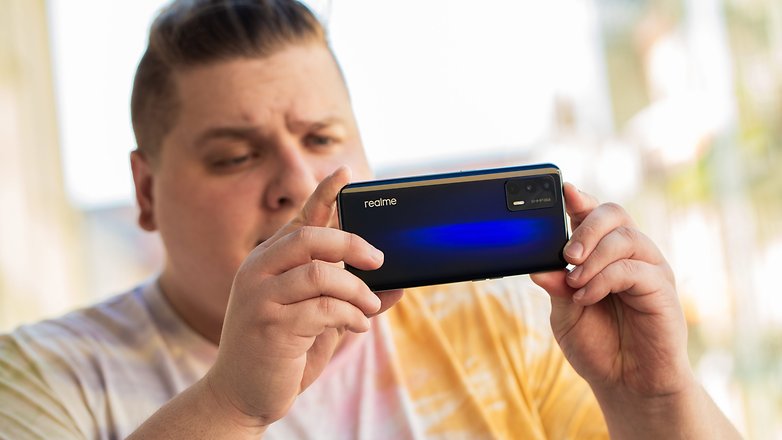
Realme’s official commitment
“We aim to provide at least two years of bi-monthly security updates. This will be done monthly for the first six months after launch with at least one major Android update.
We also aim to provide Android security patch updates for all Realme smartphones, including entry-level devices such as the Realme C series smartphones,” said Realme France in February.
At the beginning of December, we contacted the European Realme team, who confirmed that this same update policy will be maintained for the recently released Realme 10 (hands-on).
The update cycle for Realme smartphones
Realme GT
- Android versions: Two.
- Security updates: Three years, monthly patches for 6 months followed by bi-monthly.
Realme numbered
- Android versions: One.
- Security updates: Two years, bi-monthly patches.
Realme X
- Android versions: One.
- Security updates: Two years, bi-monthly patches.
Realme C
- Android versions: One.
- Security updates: Three years, bi-monthly patches.
Is this information publicly available to the consumer?
Realme does not have a dedicated page on its official website allowing that provides the duration and frequency of updates for its smartphones.
However, the manufacturer listed on this page updated ROMs for its models while allowing users to download the latest version. The page also offers a logbook to check whether the ROM has received the latest security patch or not.
But this page does not seem to be updated regularly and does not list the latest models like the Realme GT or the Realme 8 and 8 Pro.
How many Android and security updates does Vivo promise
Vivo is playing it safe in Europe, but the manufacturer chalks up one of the highest figures when it comes to smartphone sales worldwide. We’ve seen the brand everywhere since its Euro 2020 ad campaign, so I think it’s interesting to include it here.
The manufacturer doesn’t commit to the number of Android versions, although Vivo France confirmed with me a few weeks ago that the latest flagship, the Vivo X60 Pro 5G, would receive three versions of Android and three years of security patches. This means we’re not that far from the commitments made by Samsung and OnePlus.
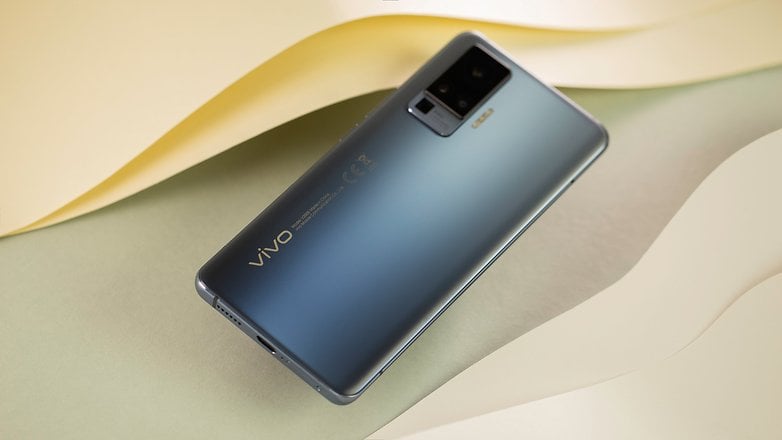
Vivo’s official commitment
“We are one of the fastest manufacturers in terms of rolling out security updates thanks to our dedicated R&D teams (the Vivo X51 has received all monthly patches since its release).
In 2020, we updated our entire European line-up to Android 11 only a few months after their release—even the entry-level smartphones. We follow Google’s recommendations to offer at least three years of security updates,” a Vivo France representative confirmed to us.
Vivo’s smartphone update cycle
Vivo X (flagship)
- Android versions: Three for the Vivo X60 Pro and later, no guarantee for the rest.
- Security updates: Three years, quarterly patches on a minimum basis.
Vivo Y (mid-range/entry-level)
- Android versions: No commitment.
- Security updates: Three years, minimum quarterly patches.
Is this information publicly available to the consumer?
No, Vivo did confirm in a press release last June its update commitments for the Vivo X60 Pro 5G, i.e. three Android versions and three years of security patches. But the manufacturer did not provide any other official and publicly available information about the rest of its smartphone catalog.
A dedicated page is there that allows you to download the latest version of your ROM but it does not provide any information about the content of the update or whether it includes an Android security patch.
How many Android and security updates does Sony promise
Sony offers a very objective update policy: there are three years for security updates, and two years for system updates. Support for the newest versions of the Android operating system vary by region, and if we consider that Android 13 for Sony’s smartphones is scheduled to arrive in December 2022, we can say that the company is concerned about keeping its devices software up to date.

Sony’s official commitment
“Sony’s warranties for security and system updates are three years for security updates, and two years for system updates,” a Sony representative in Germany confirmed to us.
Sony’s smartphone update cycle
- Android versions: Two years.
- Security updates: Three years, the frequency of the patches wasn’t confirmed.
Is this information publicly available to the consumer?
For years Sony has handled software support for its devices on an individual basis. So be prepared for a fragmented experience with the official support page for software updates. Sony Electronics also publishes news about software updates and services directly on the press page.
Conclusion
That’s it for this lengthy article that provides a clearer picture of the update policies of the main Android smartphone manufacturers. It remains to be seen that the duration and frequency of security updates as promised by Samsung, OnePlus, and others should not be taken at face value.
The timeliness of updates is another issue that would certainly deserve an article of its own. Some of our competitors have tracking lists for that, and you can see for yourself just how rare is it for manufacturers to keep to their software update policies.
I also think that such promises as well as the legal framework of update policies could be interesting subjects to discuss. Can we file a complaint against a manufacturer if it does not keep its promises? Are there any laws that impose a minimum number of software updates across time? Share with me in the comments section if you are interested.
This article was updated in January 2024 with updates to Motorola Razr, Realme, Samsung Galaxy S, Galaxy A, and Xiaomi Redmi Note policies.






